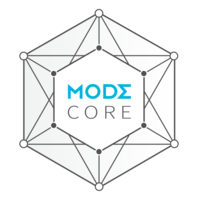Mode, a networking startup based in San Francisco, has exited from stealth and announced Mode Core, the first software-defined core network (SD-CORE) optimized for any SD-WAN deployment. Mode Core is designed to be used in combination with SD-WAN and last-mile Internet to offer “enterprises affordable MPLS-level reliability and QoS”.
Led by co-founders Dr. Nithin Michael and Cornell Professor Kevin Tang, Mode has been working on Mode Core for the last three years.
“Mode Core is a pure software-defined network whose routing efficiency translates into the kind of reliability and performance typically reserved for private networks like MPLS,” says co-founder Dr. Nithin Michael. “We operate the first autonomous routed network using a globally distributed optimal control system, Mode HALO. Unlike rigidly constrained fixed routing protocols, Mode HALO intelligently shifts traffic in milliseconds, dynamically adjusting to network changes and traffic flows.”
The new service is a global overlay implemented across carrier-grade and edge compute networks, such as Ericsson’s Unified Delivery Network (UDN), which is present in 22 locations around the world and works in partnership with 100 broadband service providers. The combination of the two results in an autonomous private backbone, which works in complement to any enterprise SD-WAN deployment.
Mode Core coupled with SD-WAN ensures SLA-backed reliability for all traffic and quality of service (QoS), including in the cloud, data centers, remote offices, and for mobile users – for significantly less in terms of cost than MPLS.
Paul Dawes, Mode CEO, explains: “Over 90% of latency variance happens in the internet’s core, not the last mile. Today’s businesses are increasingly deploying SD-WAN for site-to-site and hybrid cloud applications. Traditional hardware-defined private networking solutions like MPLS guarantee reliability, but are inelastic, hard to manage, and costly. Mode Core was built to enhance SD-WAN, leveraging our breakthrough in routing efficiency to deliver the performance and reliability of networks like MPLS, but with the flexibility, elasticity, and affordability of a cloud service.”
The National Science Foundation (NSF) did its own evaluation of Mode HALO on its GENI network testbed. NSF detected a 300% increase in throughput at the lowest possible delay between hosts in New York and Sunnyvale. Compared to protocols which solely relied on heuristics, Mode HALO adapted rapidly to dynamic traffic changes without prior knowledge.
Of the partnership with Mode, Marcus Bergström, VP and GM Ericsson UDN, says, “Ericsson built the Unified Delivery Network as an edge compute platform that enables global reach for our network operator partners. Mode provides the elasticity and performance required by the modern workloads running on our network. Its software-defined, math-based approach represents the future of packet-switched networking.”
Unified Communications providers are able to use Mode Core to further the reach of their own core network, or to eliminate the need to build one. Mode Core is also suitable for ultra low latency applications such as multiplayer gaming, interactive streaming and remote command and control.
In addition to today’s launch of Mode Core, the company is announcing its recent fundraising total of $16M in series B funding, led by GV. To date, Mode has raised over $24M, including a series A round led by NEA in 2015.

